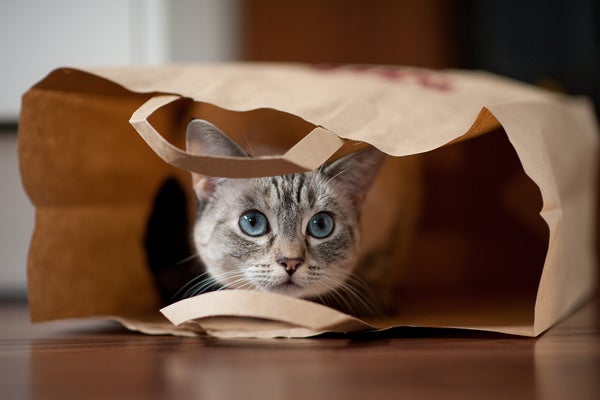February 12, 2025
3 min read
The Latest on Bird Flu Strains and Sick Zoo Animals
Scientists have reported a new strain of bird flu in Nevada dairy cattle. And viral spread in pet cats has fueled worries over increased risk of exposure to humans

We’re covering the latest bird flu news to keep you up to date. Here’s what’s happening:
Different Strain of H5N1 in Dairy Cows
Several dairy cattle herds in Nevada have tested positive for a strain of H5N1 avian influenza that is different from the one that has been predominantly infecting such cattle since last March, the U.S. Department of Agriculture reported on February 5. It was confirmed on January 31 during the agency’s recently launched national milk testing strategy. A dairy worker was also infected with the strain, the Centers for Disease Control and Prevention said on Monday. This genotype, called D1.1, is more commonly found in wild birds and poultry. It has been linked to some severe infections in humans, including the first death in the U.S. The finding means the virus could be harder to eradicate from cattle than scientists thought because it could be reintroduced by wild birds.
On supporting science journalism
If you’re enjoying this article, consider supporting our award-winning journalism by subscribing. By purchasing a subscription you are helping to ensure the future of impactful stories about the discoveries and ideas shaping our world today.
Bird Flu May Have Spread between Cats and Humans
The CDC briefly posted a report last week that contained data that suggested the H5N1 virus may have spread from house cats to humans, and vice versa, the New York Times reported. The information on H5N1 initially appeared in a Morbidity and Mortality Weekly Report (the CDC’s regular publication on public health issues and outbreaks) that was about wildfire air quality, and it may have been inadvertently included. The data were quickly removed. They had described one household where a cat infected with H5N1 may have spread the virus to another cat and an adolescent child and a second household where an infected dairy worker may have spread the virus to a cat. Cats have previously gotten infected after drinking raw milk or consuming raw pet food, but this is the first known case of a cat infecting a human in the current outbreak—suggesting house cats could be a possible vector for spreading the virus to people.
New Head of U.S. Pandemic Office Will Face Bird Dilemma
President Donald Trump selected Gerald Parker, a veterinarian and former federal health official, to lead the White House Office of Pandemic Preparedness and Response Policy. Congress created the office in 2022 to advise the president and coordinate the government’s response to pandemics and other public health threats. Parker was associate dean for Global One Health at Texas A&M University and was head of the National Science Advisory Board for Biosecurity (NSABB) under the Biden administration. The NSABB determines what research can be conducted with dangerous pathogens, including so-called gain-of-function research. If bird flu were to become a pandemic, Parker would have a central role in the coordinating the federal response. Ashish Jha, Biden’s former White House COVID response coordinator, told CBS News that Parker “is a very good choice.”
NYC Live Bird Markets Ordered to Close
New York State’s governor Kathy Hochul announced that all live bird markets in New York City and several surrounding counties are being ordered to close temporarily for cleaning and disinfection. The order came as H5N1 was detected at several bird farms in the city. The state’s Department of Agriculture and Markets issued the order, which requires the roughly 80 markets in New York City and Westchester, Nassau and Suffolk Counties to sell their inventory, conduct cleaning and disinfection and remain closed for five days afterward. Markets that have had confirmed virus in flocks will also be required to follow quarantine and culling instructions.
Suspected Infections in NYC Zoos
Several ducks and other birds at the Queens and Bronx Zoos in New York City have died of confirmed or suspected H5N1 infections, Gothamist reported. The dead include three Hooded Merganser ducks at the Queens Zoo that tested positive for the virus. Nine wild birds and three ducks that died at the Bronx Zoo have been tested, but results are still pending. Zoo staff are taking steps to prevent other animals from being exposed to the virus, although it poses little threat to human visitors, officials said.

